
The Business of Fashion
Agenda-setting intelligence, analysis and advice for the global fashion community.

Agenda-setting intelligence, analysis and advice for the global fashion community.
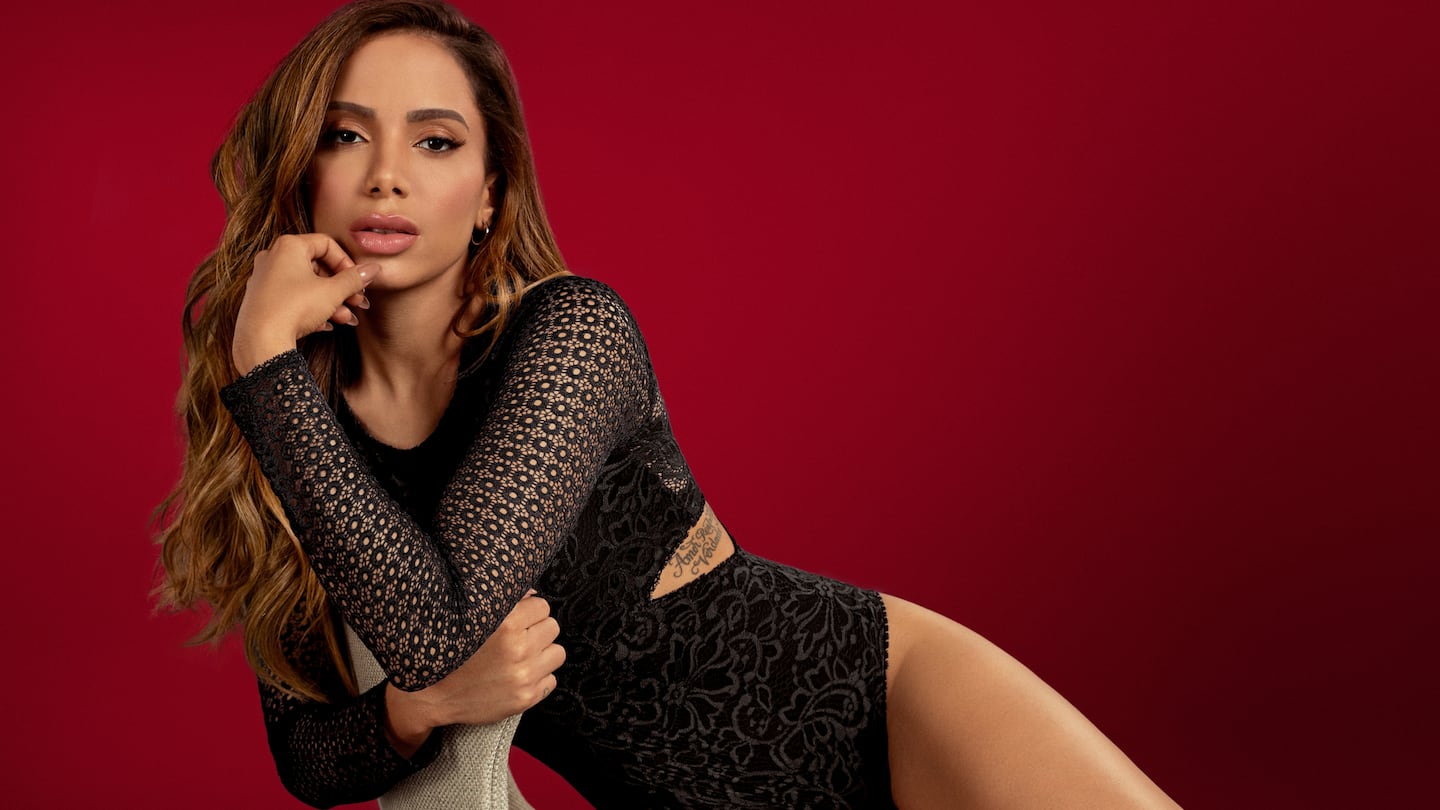
Before earning the nickname ”queen of the girdle,” Carolina Sandoval remembers a time when fans and peers criticised her for posting social media photos of herself wearing waist trainers.
“They said it was not appropriate for a TV presenter,” wrote the lively Venezuelan in the caption of a photo of her own brand of waist-cinching creations on Instagram where she now boasts more than 2.7 million followers.
“Five years later, I can say it’s the best thing that has happened in my professional life, because it jumpstarted my career as a businesswoman. I managed to live off my fajas and send a message to thousands of women who are being humiliated for having extra weight,” she added.
Sandoval’s faja (’girdle’, in Spanish) was manufactured in Colombia, a country that has leveraged its obsession with beauty to become an international hub for plastic surgery. It’s no coincidence that the Latin American nation has also earned a reputation for making some of the best body-moulding garments in the world.
ADVERTISEMENT
While the shapewear category certainly hasn’t been immune to the financial impact of the pandemic, demand for leading Latin American brands and interest in their manufacturers is unlikely to fade any time soon.
Textile advancements shape worldwide appeal
Colombian-made shapewear is currently exported to 37 countries and, according to data from TradeMap, the South American nation is second only to China as an exporter of girdles and panty-girdles. Colombia went from exporting $43 million in 2019 to $41.77 million in 2020, which represents a 3.6 percent decrease — but the decline is minuscule given the context of the pandemic.

The category’s resilience is even more apparent when compared to the 17.2 percent decrease Colombia saw in apparel exports from $508 million in 2019 to $421 million in 2020.
Big export markets like China or Bangladesh are clear leaders when it comes to the broader shapewear and underwear categories but mass production also has a negative impact on delivery time, notes Catalina Hernandez, Vice President of ProColombia, the organisation that promotes exports and tourism.
You can’t get that ‘Latin fit’ of the Colombian faja from Chinese exporters.
“[Clients] need countries that can supply the demand quickly. We don’t manufacture garments by the millions like China, but this allows us to be more flexible. We can deliver in two months rather than 4 to 6.”
Additionally, “you can’t get that ‘Latin fit’ of the Colombian faja from Chinese exporters,” claims Hernandez, explaining that over the years, Colombians have developed technologies, textiles and “an impressive know-how to maintain elasticity and form.”
Director of PuntoTex, Sebastian Ocampo, a third-generation entrepreneur in activewear, swimwear, and shapewear manufacturing exports says girdle sales “saved his business” during the pandemic. He credits their success to his family’s 50 years of experience in the industry, which has allowed them to develop new construction techniques and pieces that have “made their products unique,” elevating Colombia’s reputation in the sector.
ADVERTISEMENT
He cites the example of one of his firm’s most sought after pieces, the “vestifaja” — a hybrid between a swimsuit and a girdle. “You need knowledge of both swimwear and shapewear to make it. It has 360 degree control; it’s very difficult to manufacture. Our Chinese competitors haven’t been able to replicate it,” he claims.
Indeed, Colombian expertise in this area launched a partnership in 2020 between Victoria’s Secret and top Colombian underwear brand Leonisa to create a shapewear line, which is now part of its permanent offering.
“Latin American culture hasn’t been the only one associated with these types of products, but it has expanded recently,” says Hernandez. She believes that when the Kardashians wore waist trainers by Colombian brand Ann Chery, shapewear became less taboo and made the world more aware of Colombian products. Today Colombia stands as the leader in underwear exports in Latin America, and brands like Gef, Punto Blanco and Touché, for instance, are sold all over the Americas and have reached Europe.
However Bogotá-based fashion designer Laura Laurens whose namesake brand has also reached global markets, believes there is much more to the beauty discourse in Latin America. “The problem is when the stereotype about Latinas becomes the only story, when there is a garden full of other stories, silhouettes and bodies which are considered beautiful.”
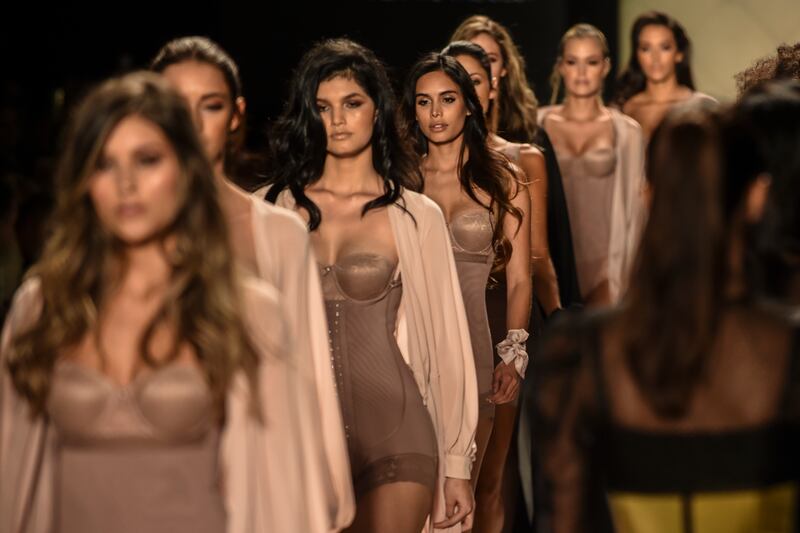
The designer herself is an example of this diversity with her cropped hair and uncompromising avant-garde style — both personally and as a designer. While she agrees that Colombian shapewear owes its fame to its excellent quality and body shaping properties, she also believes it has “helped perpetuate the male gaze cliché that has lent itself to objectifying women’s bodies.”
Meanwhile, in Sao Paulo, Brazil, Sandra Chayo, CEO of lingerie and shapewear brand Hope, believes that what differentiates Brazilian garments from competitors is “offering sexy designs instead of a bandaged hospital look,” adding that this includes incorporating lace and paying special attention to the shape and style of the pieces, “to make women feel beautiful from the inside out.” She observes that shapewear sales were stable during the pandemic, unlike sleepwear and activewear which she notes ‘boomed’ last year.
Chayo appears to be investing big in marketing, having recently cast Brazilian singer Anitta for both the lingerie and shapewear collection campaigns. The superstar now boasts more than 52 million followers on Instagram and has an increasingly global fanbase beyond Latin American markets.
Some of Hope’s pieces are made with a special fibre called Emana, made by Brazilian textile manufacturer Rhodia (part of Solvay Group). “It aids the skin and, if it’s used correctly, it can help treat skin infections and improve cellulite,” she claims. But Chayo is quick to clarify that “it’s only a plus,” as their top-selling leggings focus on abdomen support, which is “what women are really looking for.”
ADVERTISEMENT
According to Fernando Pimentel, President of the Brazilian Textile and Apparel Industry Association (ABIT), Emana is said to aid with circulation and muscle recovery, making it a high demand item for activewear brands too.
It’s become much more than just a control garment for aesthetics; it’s about wellbeing.
For their part, Rhodia has also developed functional and biodegradable textile yarns like Amni Soul Eco, and Rhodianyl Eco, commonly used in school uniforms and other textile garments. Last year they launched Amni Virus-Bac Off which the company says is made with antiviral and antibacterial polyamide textile yarn, now being used in the manufacture Covid-19 protective garments.
Colombians have also developed advanced textiles with similar qualities for sportswear and medical protective clothing. In shapewear, particularly, they now offer compression garments and girdles with vitamin E, aloe vera and thermal conductive properties with copper thread to aid circulation.
“It’s become much more than just a control garment for aesthetics; it’s about wellbeing,” claims Tamara Gonzalez Litman, contributor for Fashion Network, from Cali, Colombia, adding that she has also witnessed an increase in the demand for “compression” activewear.
“Colombian textiles are one of the best out there in terms of compression,” says Sofia Levy, who founded activewear brand Asania in Mexico three years ago and sources fabrics from her home country. “It took me over a year to achieve the fit I use for my leggings today. Women love it; they say it lifts their booty and flattens the belly.”
Obsession with the body beautiful sustains local sales
One reason Latin Americans have become such experts in shapewear comes from the culture. “Some women may struggle to pay their bills and put food on their tables, but they get a manicure every week. This concern for looking great is probably the reason for our leadership in shapewear,” says Chayo.
Ron Horovitz, CEO of Brazilian brand Plié, concurs saying, “[We] Brazilians are very vain. [We’re] one of the markets that invests the most in aesthetics, whether it’s in cosmetics, procedures or products.”
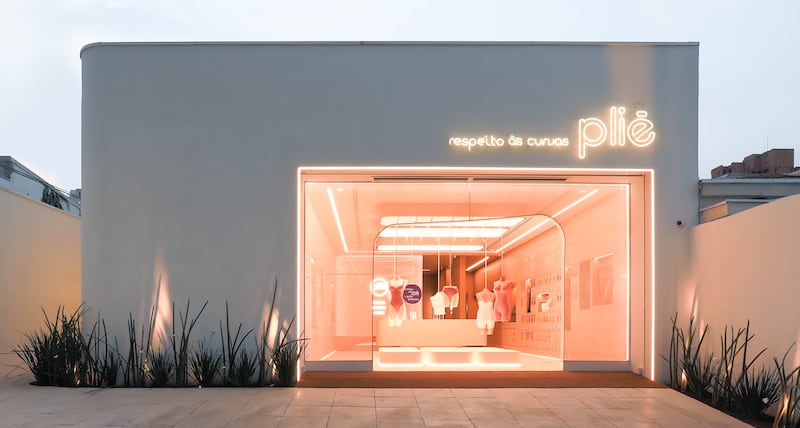
It’s a similar aesthetic culture in Colombia, according to Tamara Gonzalez Litman. “Like Venezuela and Brazil we are obsessed with beauty,” she says. “Women seek that ‘wasp waist’ that is associated with the beauty queen ideal of the 90-60-90 measurements.”
However, the idea of Latin America being a monolith for narrow body and beauty standards makes many uncomfortable or angry or both. Colombian plus size influencer Manuela Flores aims to change perceptions by advocating for a broader view of beauty on her social media.
“I wont stop doing what I love out of fear of what people will say about my body,” she wrote recently on her Instagram account next to a photo of her wearing a swimsuit and a leopard print robe, “there are places where people can’t understand how we dare to wear a bikini without covering up ... That says a lot about us as a society and how far we still have to go to eradicate discrimination and accept body diversity.”
In Brazil, with plus size influencers like Thais Carla Rocha dos Santos and actresses like Anna Cláudia Protásio Monteiro, with their 2.4 and 2.8 million respective Instagram followers, it seems that indeed perceptions are beginning to change.
However, it will take time before a more diverse view of beauty is fully embraced in the mainstream by Latin American societies. In the meantime, local markets will still be key for shapewear and underwear producers. Horovitz says Brazil makes up 80 percent of Plié's revenue. More evidence lies in the fact that even when online sales grew a staggering 184 percent last year amidst the pandemic, the brand moved ahead with seven new stores in Brazil.
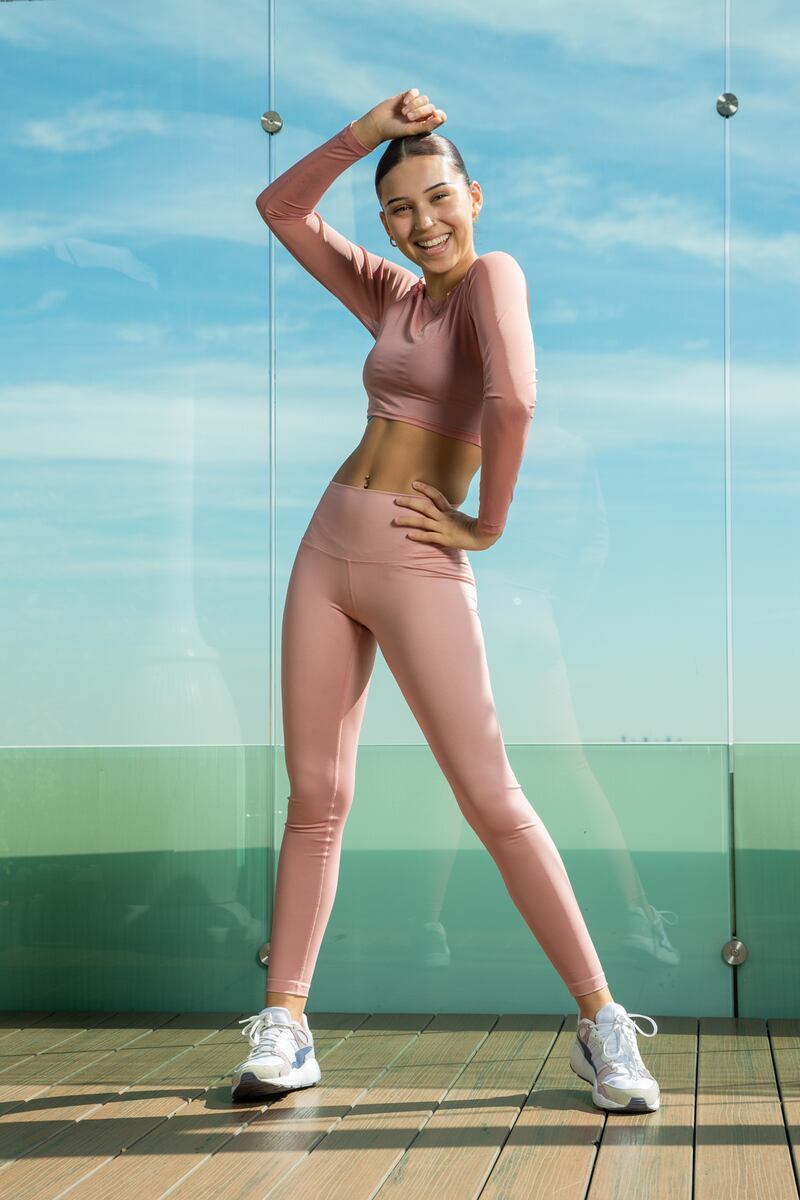
Data from ABIT reveals that in 2019 Brazilians purchased 6.2 million “moldeladores” (which refers to girdles and similar items). Chayo says that for Hope, “we didn’t see a huge rise in exports; local markets are still our main priority.”
Innovations attract international interest
Juan Fernando Loaiza, economic research specialist at Inexmoda (parent company of Medellin-based fashion week organisers Colombiamoda) says this urge to satisfy the needs of the local market led “entrepreneurs and designers to observe, deconstruct and come up with innovations that were subsequently welcomed by the international market.” He says that, in contrast, other international competitors have been focused on competitive pricing.
Gonzalez Litman points out that there is a growing market for men who want shapewear to better control their body contours. “Brands noticed that a lot of men were purchasing female garments, so they developed special fajas that don’t exert too much pressure on the genitals, as this is known to be harmful to men.”
Many Colombian brands are now venturing into underwear, sportswear and swimwear that also offer larger sizes. “In Colombia, a size ‘L’ with a 107 cm hip circumference is not enough for the booties women have here,” says Gonzalez. “Brands have seen [modest increases in] demand for bigger sizes locally and have taken advantage of that to export to Mexico and the US where there is a huge market for it.”
Take for example Inanna Swimwear, a brand founded by Stephany Gregory and Adriana Chaves three years ago in Colombia to serve a broader range of body types.
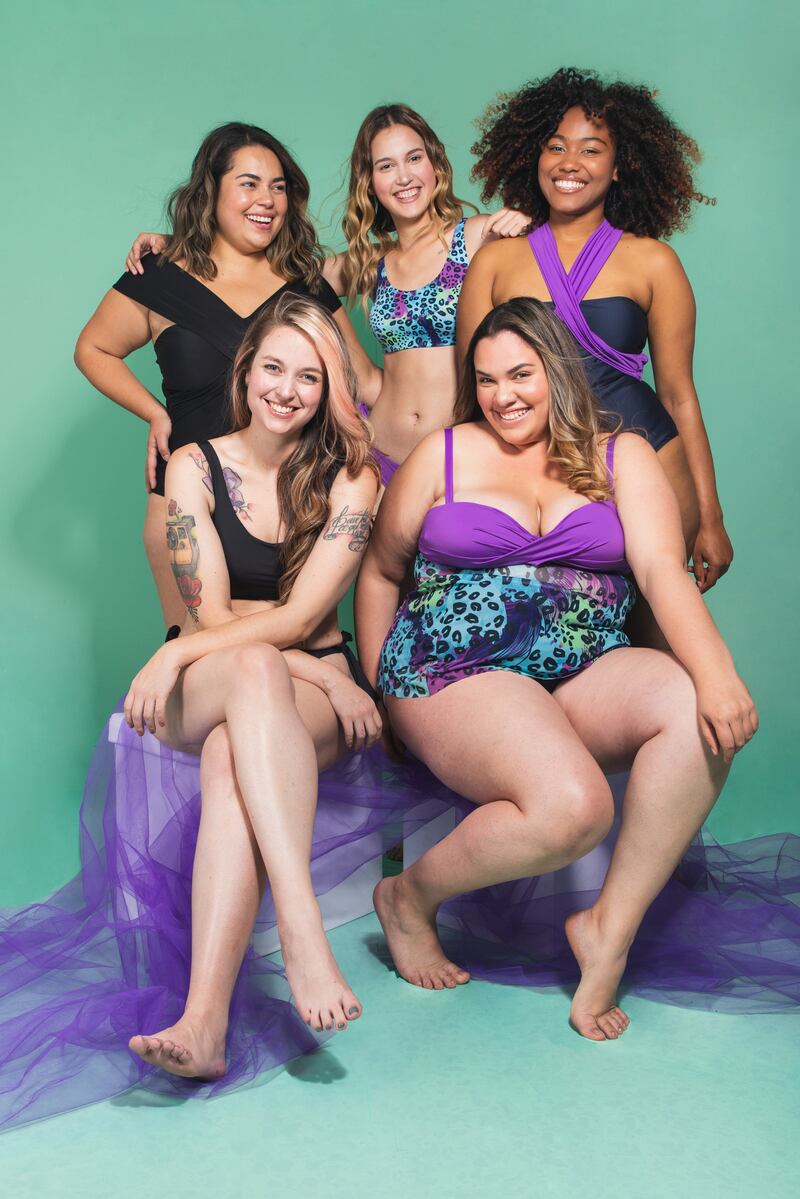
“The compression aspect is the single most important thing women look for in our products,” says Gregory, explaining how their “power net” construction in swimsuits “contours the whole body.” Chaves says that roughly 70 percent of their market is in Colombia. However, in the past year they’ve noticed an increase in demand from Peru, Chile, Panama, Mexico and the US.
The Middle East has recently become an exciting market for Colombian and Brazilian brands alike. “Women in Arab countries have a morphology which is very similar to ours, small waists, wide hips and large bust,” says Hernandez.
There is a lot of opportunity for the Colombian fashion system to expand in the Middle East
Data from Inexmoda reveals that in 2019 Colombian exports of shapewear to Kuwait, Saudi Arabia, the United Arab Emirates and Qatar reached $919,000. This represents an 11 percent increase from the overall Middle East region from the previous year, according to data by the National Administrative Department of Statistics (DANE).
While it’s still a small number, Hernandez believes “there is a lot of opportunity for the Colombian fashion system” to expand in the Middle East in the years to come, adding that Colombia will have significant presence in the next Dubai Expo.
Chayo says that her firm Hope will export to the United Arab Emirates for the first time this year through a site specially dedicated to Brazilian products called Metrobrazil.com.
Today, neighbouring Paraguay is Hope’s biggest destination market abroad accounting for 32 percent of exports. Next comes the dynamic African market of Angola with 16 percent, which can be explained by its close ties to Brazil as both are Portuguese-speaking countries. Chayo believes the demand for shapewear in Angola is due in part to the popularity of Brazilian soap operas which is further aided by featuring Brazilian actresses in their marketing campaigns. “The [beauty] culture is very similar,” she says, adding that the brand is opening a franchise store there soon.
Another sign of the rise in demand for Latin American shapewear and apparel, in general, is its increased presence in international trade shows, like Interfiliere, Salon International de la Lingerie and broader apparel and accessories trade events like Informa Markets’ Coterie, Project and Sourcing at Magic based in the US.
“We have seen a growing segment of Latin American apparel brands partnering with us within the contemporary and advanced contemporary category at Coterie,” says Kelly Helfman, Commercial President of Informa Markets Fashion.
She explains that in recent years they have developed relationships with top export agencies like Abit/Abest, Procolombia and Promperu (in Brazil, Colombia and Peru respectively), “who have offered invaluable guidance and support” to help brands enter the North American and global markets.
But Helfman notes that sourcing closer to home is another reason the US is looking to Latin American brands. “We’ve seen in recent years, and especially over the last year, many US companies are also seriously re-evaluating their supply chains and therefore nearshoring is becoming even more of a strategic discussion point.”
It’s hard to not be optimistic about the future of Latin shapewear. As Hoffman points out, free trade agreements between United States and Latin American countries such as the TPA (US-Colombia Trade Promotion Agreement) now “have added an additional layer in desirable trade with Latin American manufacturers — a trend we anticipate will continually grow in the future.”
Related Articles:
The Business of Reggaeton Style
Though e-commerce reshaped retailing in the US and Europe even before the pandemic, a confluence of economic, financial and logistical circumstance kept the South American nation insulated from the trend until later.
This week’s round-up of global markets fashion business news also features Korean shopping app Ably, Kenya’s second-hand clothing trade and the EU’s bid to curb forced labour in Chinese cotton.
From Viviano Sue to Soshi Otsuki, a new generation of Tokyo-based designers are preparing to make their international breakthrough.
This week’s round-up of global markets fashion business news also features Latin American mall giants, Nigerian craft entrepreneurs and the mixed picture of China’s luxury market.